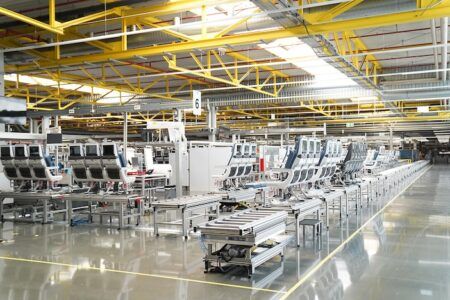Airbus has opened an automated A321XLR equipment installation hangar in Hamburg, Germany, with the aim of expanding its production capacity for the aircraft type. The hangar is the latest step in the modernisation and digitalisation of Airbus’s industrial systems and is intended to be a key part in expanding the company’s production capacity to 75 narrowbody aircraft per month in 2026, from around 45 per month today.
The new hangar at the Finkenwerder site, designated H259, has 9,600m2 of production space, in which all the components of the rear fuselages of the A321XLR aircraft – also built in Hamburg – will be installed and mounted. The hangar has been equipped with state-of-the-art technologies for operations and manufacturing, such as automated logistics, fully digital systems, and test stations that can output the status of each fuselage section (both in terms of logistics and resources) at any time.

The almost 24m -long fuselage sections are fitted with all electrical and mechanical systems in the hangar, as well as other elements such as windows, floor panels and external antennas, on an automated ‘pulse line’ consisting of eight stations. Each fuselage section is tested extensively directly after the installation of the systems. The fuselage sections are then transferred to the final assembly line in Hamburg.
The stations in the hangar were planned in close consultation with the employees who will use them in order to create both an efficient production flow and an ergonomically optimised and modern working environment. The interior design also considered creating optimal conditions for cooperation between employees in production and the supporting functions.
“Airbus’ Hamburg site plays a significant role in the development and production of the A321XLR. With our new, state-of-the-art equipment installation hangar, we are now expanding our capacity to manufacture A321 fuselages and making an important contribution to supporting our ramp up. At the same time we are reaffirming the importance of Hamburg for Airbus,” said André Walter, head of Airbus commercial aircraft production in Germany. “The design of the building reflects the latest standards in production and sustainability.”
As one would expect, the structure was designed with sustainable practices in mind, with a 3,000m2 photovoltaic system on the roof that supplies the hangar with electricity, and any surplus power used to power the site. Insulation measures and a fully automatic control system for heating, ventilation and lighting have also been specified.






